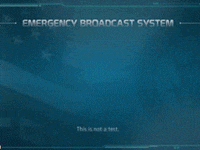04.09.2025, 09:23
Poptropica is more than just an online game; it’s a creative world filled with stories, adventures, and problem-solving opportunities. Since its launch in 2007, the game has attracted millions of players worldwide, offering them a safe and imaginative environment to explore. This article takes a closer look at Poptropica, its gameplay, history, and why it remains popular among kids, teens, and nostalgic adults.
The Origins of Poptropica
Poptropica was created by Pearson Education’s Family Education Network and was designed by Jeff Kinney, the author of the famous Diary of a Wimpy Kid series. It quickly became one of the most popular online games for children, focusing not on violence or competition but on creativity, puzzles, and exploration.
When it first launched, Poptropica stood out because it combined storytelling with educational elements. Each island in the game presented a different theme, mystery, or challenge that required critical thinking. This approach helped the game remain engaging and fun, while also subtly encouraging problem-solving skills.
Gameplay: How Poptropica Works
Players begin by creating their own customizable avatars. The avatars are simple but charming, with a cartoon-like design that appeals to children. Once created, players set out to explore different islands, each offering a unique quest.
The Islands and Their Stories
The highlight of Poptropica is its islands. Each island is like a mini-game with its own storyline. For example:
Shark Tooth Island takes players on a mission to save tourists from a hungry shark.
Time Tangled Island allows players to travel through history to correct mistakes in the timeline.
Mythology Island introduces players to Greek gods and mythical creatures.
Spy Island immerses players in a secret-agent mission to stop criminal masterminds.
Each island requires players to talk to characters, solve puzzles, collect items, and make smart decisions to move forward. Unlike many games, there is no single “end” to Poptropica—it is a world that keeps expanding.
Character Customization
One of the most exciting features for players is the ability to customize their avatars. From outfits to hairstyles, Poptropica allows users to create a unique identity. Over time, new costumes and items were introduced, giving players more freedom of expression.
Educational and Creative Aspects
Poptropica was designed to be more than just entertainment. Many of the islands are inspired by history, literature, or science. For example, on Time Tangled Island, players learn about historical events and figures. On Mythology Island, players get an introduction to ancient Greek myths.
This combination of fun and education makes Poptropica a valuable tool for children. Parents appreciated the fact that their kids were not only entertained but also learning without realizing it.
Why Poptropica Became So Popular
Several factors contributed to Poptropica’s success:
Accessibility: The game was originally free to play in a web browser, which meant millions of kids could enjoy it without needing expensive consoles.
Safe Environment: Unlike many multiplayer games, Poptropica had limited chat options, making it safer for younger players.
Regular Updates: New islands and stories were added regularly, keeping the game fresh and exciting.
Nostalgia Factor: For many, Poptropica became a part of childhood, and they continue to revisit it as adults.
The Evolution of Poptropica
As technology advanced, Poptropica also changed. Originally built in Adobe Flash, the game faced challenges when Flash was discontinued. However, developers transitioned the game to new platforms, including mobile apps and a newer HTML5 version, ensuring that it remained accessible.
Mobile Expansion
The release of Poptropica apps for iOS and Android opened the game to a new generation of players. While some older islands were retired, new adventures and mini-games were added.
Membership and Premium Features
While Poptropica was originally free, it later introduced membership options. Members gained access to special items, costumes, and early access to new islands. This allowed the game to continue growing while still offering free content for casual players.
Poptropica’s Community
A key part of Poptropica’s charm is its community. Players share tips, guides, and walkthroughs on forums and social media. The sense of teamwork—helping others solve island mysteries—keeps the spirit of the game alive.
For older players, nostalgia has created online communities where fans revisit their favorite islands and share memories of playing as children.
The Future of Poptropica
Even after more than a decade, Poptropica continues to exist and evolve. With the rise of educational gaming, its mix of learning and fun ensures that it still has a place in the digital world. Developers have hinted at new features, expansions, and a commitment to keeping the game alive for both old fans and new generations.
Why It Still Matters Today
In a gaming landscape dominated by high-tech graphics and competitive play, Poptropica reminds us that simple storytelling and creativity can still captivate players. Its family-friendly design makes it timeless, and its unique focus on exploration and learning keeps it relevant.
Tips for New Players
For those just discovering Poptropica, here are a few tips:
Start with beginner-friendly islands like Early Poptropica or Shark Tooth Island.
Talk to every character you meet—clues are hidden in dialogue.
Collect items carefully; they often serve a purpose later in the quest.
Customize your avatar to make the adventure feel more personal.
Don’t hesitate to check community forums for hints if you get stuck.
Conclusion: A Digital Adventure Worth Exploring
Poptropica remains one of the most beloved online games for kids and nostalgic adults. With its combination of imaginative islands, clever puzzles, and educational themes, it continues to offer a safe and engaging virtual adventure. Whether you are revisiting it from childhood or trying it for the first time, Poptropica provides a unique gaming experience that blends fun, learning, and creativity.
The Origins of Poptropica
Poptropica was created by Pearson Education’s Family Education Network and was designed by Jeff Kinney, the author of the famous Diary of a Wimpy Kid series. It quickly became one of the most popular online games for children, focusing not on violence or competition but on creativity, puzzles, and exploration.
When it first launched, Poptropica stood out because it combined storytelling with educational elements. Each island in the game presented a different theme, mystery, or challenge that required critical thinking. This approach helped the game remain engaging and fun, while also subtly encouraging problem-solving skills.
Gameplay: How Poptropica Works
Players begin by creating their own customizable avatars. The avatars are simple but charming, with a cartoon-like design that appeals to children. Once created, players set out to explore different islands, each offering a unique quest.
The Islands and Their Stories
The highlight of Poptropica is its islands. Each island is like a mini-game with its own storyline. For example:
Shark Tooth Island takes players on a mission to save tourists from a hungry shark.
Time Tangled Island allows players to travel through history to correct mistakes in the timeline.
Mythology Island introduces players to Greek gods and mythical creatures.
Spy Island immerses players in a secret-agent mission to stop criminal masterminds.
Each island requires players to talk to characters, solve puzzles, collect items, and make smart decisions to move forward. Unlike many games, there is no single “end” to Poptropica—it is a world that keeps expanding.
Character Customization
One of the most exciting features for players is the ability to customize their avatars. From outfits to hairstyles, Poptropica allows users to create a unique identity. Over time, new costumes and items were introduced, giving players more freedom of expression.
Educational and Creative Aspects
Poptropica was designed to be more than just entertainment. Many of the islands are inspired by history, literature, or science. For example, on Time Tangled Island, players learn about historical events and figures. On Mythology Island, players get an introduction to ancient Greek myths.
This combination of fun and education makes Poptropica a valuable tool for children. Parents appreciated the fact that their kids were not only entertained but also learning without realizing it.
Why Poptropica Became So Popular
Several factors contributed to Poptropica’s success:
Accessibility: The game was originally free to play in a web browser, which meant millions of kids could enjoy it without needing expensive consoles.
Safe Environment: Unlike many multiplayer games, Poptropica had limited chat options, making it safer for younger players.
Regular Updates: New islands and stories were added regularly, keeping the game fresh and exciting.
Nostalgia Factor: For many, Poptropica became a part of childhood, and they continue to revisit it as adults.
The Evolution of Poptropica
As technology advanced, Poptropica also changed. Originally built in Adobe Flash, the game faced challenges when Flash was discontinued. However, developers transitioned the game to new platforms, including mobile apps and a newer HTML5 version, ensuring that it remained accessible.
Mobile Expansion
The release of Poptropica apps for iOS and Android opened the game to a new generation of players. While some older islands were retired, new adventures and mini-games were added.
Membership and Premium Features
While Poptropica was originally free, it later introduced membership options. Members gained access to special items, costumes, and early access to new islands. This allowed the game to continue growing while still offering free content for casual players.
Poptropica’s Community
A key part of Poptropica’s charm is its community. Players share tips, guides, and walkthroughs on forums and social media. The sense of teamwork—helping others solve island mysteries—keeps the spirit of the game alive.
For older players, nostalgia has created online communities where fans revisit their favorite islands and share memories of playing as children.
The Future of Poptropica
Even after more than a decade, Poptropica continues to exist and evolve. With the rise of educational gaming, its mix of learning and fun ensures that it still has a place in the digital world. Developers have hinted at new features, expansions, and a commitment to keeping the game alive for both old fans and new generations.
Why It Still Matters Today
In a gaming landscape dominated by high-tech graphics and competitive play, Poptropica reminds us that simple storytelling and creativity can still captivate players. Its family-friendly design makes it timeless, and its unique focus on exploration and learning keeps it relevant.
Tips for New Players
For those just discovering Poptropica, here are a few tips:
Start with beginner-friendly islands like Early Poptropica or Shark Tooth Island.
Talk to every character you meet—clues are hidden in dialogue.
Collect items carefully; they often serve a purpose later in the quest.
Customize your avatar to make the adventure feel more personal.
Don’t hesitate to check community forums for hints if you get stuck.
Conclusion: A Digital Adventure Worth Exploring
Poptropica remains one of the most beloved online games for kids and nostalgic adults. With its combination of imaginative islands, clever puzzles, and educational themes, it continues to offer a safe and engaging virtual adventure. Whether you are revisiting it from childhood or trying it for the first time, Poptropica provides a unique gaming experience that blends fun, learning, and creativity.



 Wir spielen im Jahr 2025 in Michigan, Detroit. Zur Zeit spielen wir im Monat Juni. Wir stehen ein paar Tage kurz vor der Purge - Die Säuberung. Hier kommt der Wetterbericht für den Monat Juni und speziell für die bevorstehende Nacht aller Nächte.
Wir spielen im Jahr 2025 in Michigan, Detroit. Zur Zeit spielen wir im Monat Juni. Wir stehen ein paar Tage kurz vor der Purge - Die Säuberung. Hier kommt der Wetterbericht für den Monat Juni und speziell für die bevorstehende Nacht aller Nächte.



